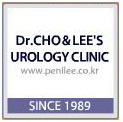성의학
글 수 140
The lack of influence of age on male fertility
Richard J. Paulson, MD Robert C. Milligan, MD
Rebecca Z. Sokol, MD Los Angeles, California
Objective: This study was undertaken to determine the effect of male aging on sperm quality as determined by semen analysis, the fertilization rate of human oocytes in vitro, and live birth rates.
Study Design: Retrospective analysis correlating outcome measures with male age was performed for 558 oocyte donation cycles in 441 couples. The oocyte donation model was chosen because it controls for oocyte quality and endometrial receptivity, which allows variations in sperm quality as a function of male age to be the only dependent variable. Outcome measures analyzed were semen analysis, fertilization rates in vitro, pregnancy rates, live birth rates, and cumulative live birth rates by life-table analysis.
Results: There was a negative correlation between male age and total sperm count, but there was no correlation between male age and any of the other parameters in the semen analysis. There was no association between male age and the fertilization rate of donated oocytes in vitro, pregnancy rates, or live birth rates. Recipient couples were grouped by quartiles of male age, and cumulative live birth rates were the same in the 4 groups.
Conclusion: Whereas male aging is associated with a significant decline in total sperm count, this change is not reflected in a decreased fertilization rate or a decreased live birth rate in the oocyte donation model. (Am J Obstet Gynecol 2001;184:818-24.)
Richard J. Paulson, MD Robert C. Milligan, MD
Rebecca Z. Sokol, MD Los Angeles, California
Objective: This study was undertaken to determine the effect of male aging on sperm quality as determined by semen analysis, the fertilization rate of human oocytes in vitro, and live birth rates.
Study Design: Retrospective analysis correlating outcome measures with male age was performed for 558 oocyte donation cycles in 441 couples. The oocyte donation model was chosen because it controls for oocyte quality and endometrial receptivity, which allows variations in sperm quality as a function of male age to be the only dependent variable. Outcome measures analyzed were semen analysis, fertilization rates in vitro, pregnancy rates, live birth rates, and cumulative live birth rates by life-table analysis.
Results: There was a negative correlation between male age and total sperm count, but there was no correlation between male age and any of the other parameters in the semen analysis. There was no association between male age and the fertilization rate of donated oocytes in vitro, pregnancy rates, or live birth rates. Recipient couples were grouped by quartiles of male age, and cumulative live birth rates were the same in the 4 groups.
Conclusion: Whereas male aging is associated with a significant decline in total sperm count, this change is not reflected in a decreased fertilization rate or a decreased live birth rate in the oocyte donation model. (Am J Obstet Gynecol 2001;184:818-24.)





